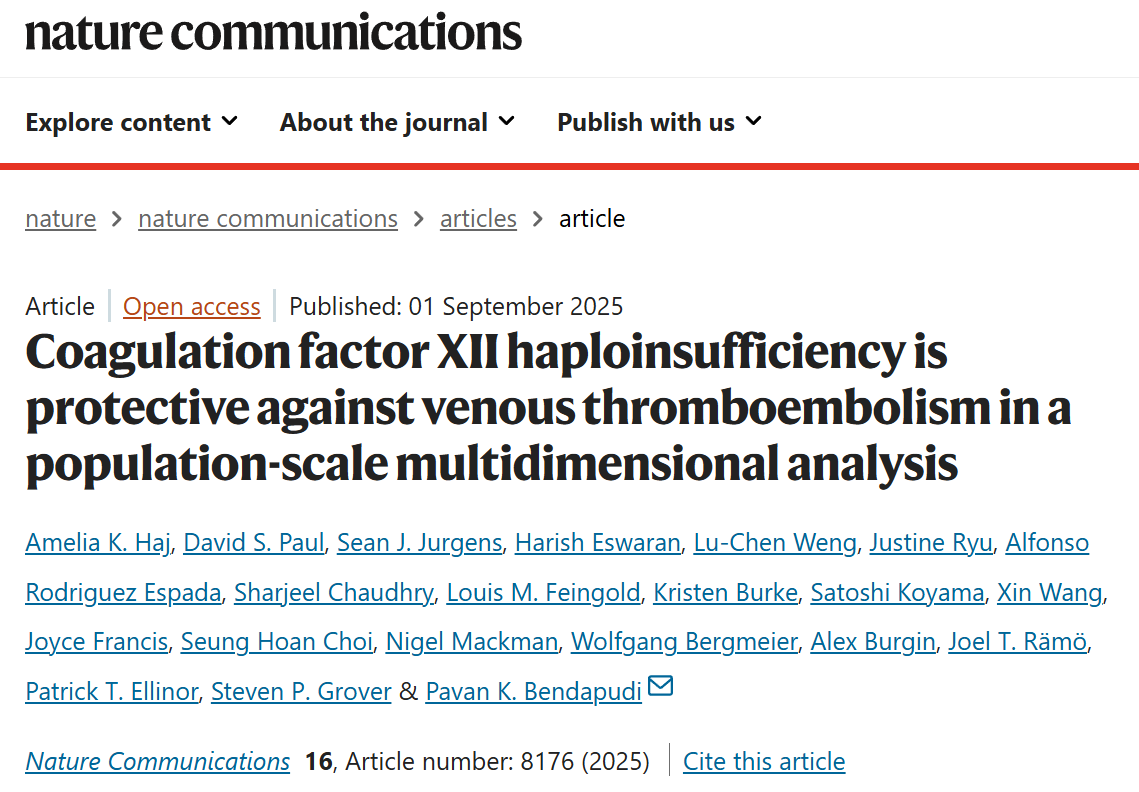
Steven Grover: Germline Heterozygous Loss of Function in FXII is Associated with a Significantly Reduced Risk of Venous Thromboembolism
Steven Grover, Staff Scientist II at Beth Israel Deaconess Medical Center, shared on LinkedIn:
“Evidence for a role of coagulation factor FXII in the pathogenesis of venous thromboembolism has proven elusive to date. In work led by Amelia Haj from Tem Bendapudi‘s group we show that germline heterozygous loss of function in FXII is associated with a significantly reduced risk of venous thromboembolism. A 50% reduction in plasma FXII levels, although unremarkable in the classical activated partial thromboplastin time assay, is sufficient to significantly reduce plasma thrombin generation by calibrated automated thrombography and venous thrombosis in a preclinical model.
Delighted to have been involved in this important work alongside several researchers from the Blood Research Center at UNC, Beth Israel Deaconess Medical Center and Massachusetts General Hospital.”
Title: Coagulation factor XII haploinsufficiency is protective against venous thromboembolism in a population-scale multidimensional analysis
Authors: Amelia K. Haj, David S. Paul, Sean J. Jurgens, Harish Eswaran, Lu-Chen Weng, Justine Ryu, Alfonso Rodriguez Espada, Sharjeel Chaudhry, Louis M. Feingold, Kristen Burke, Satoshi Koyama, Xin Wang, Joyce Francis, Seung Hoan Choi, Nigel Mackman, Wolfgang Bergmeier, Alex Burgin, Joel T. Rämö, Patrick T. Ellinor, Steven P. Grover & Pavan K. Bendapudi

The paper is out now in Springer Nature journal Nature Communications, read it here.
Stay informed with Hemostasis Today.
-
Dec 18, 2025, 17:13Daria Camilli on EuroBloodNet and EHC Collaboration for Bleeding Disorders
-
Dec 18, 2025, 16:50Marie Cambot on Innovhem’s Quantification of The HbF/HbS Ratio for SCD
-
Dec 18, 2025, 16:26Yogesh Rathod on Hematological Issues and ICU
-
Dec 18, 2025, 16:09Carlos Doti: I’m Reminded Why ASH is Such a Powerful Close to The Year
-
Dec 18, 2025, 15:23Michael Hadley: Well-Timed ACC Statement Just Out in JACC Journals
-
Dec 18, 2025, 15:12Wolfgang Miesbach on Insights from Guy Young’s ASH2025 Session on Next-Generation Gene Therapy
-
Dec 18, 2025, 14:15Plasma-Derived Therapy for Hemophilia in The Updated European Medicines Agency’s Union List
-
Dec 18, 2025, 13:55Laurent Bertoletti: BAT-VTE is One of 7 Projects Funded Under the EFFECT Trial Call!
-
Dec 18, 2025, 13:34Alexandru Stieber Explores VEXAS Syndrome
